
We all know that the water cycle is also known as the Hydrological Cycle which describes as the continuous movement of water on, above and below the surface of the Earth. Although we always think that the balance of water remains constant over time but individual molecules of water comes and goes, in and out from the atmosphere which evolves eco-Balance on our earth. The water moves in a constant cycle between land, sea and sky by the physical process of evaporation, condensation, precipitation, infiltration and runoff. The most important thing that we all are aware that the water also goes through different phases : liquid, solid (ice) and gas (vapour).

Precipitation
The condensed water vapour that falls to the Earth’s surface is known as Precipitation. Mostly the precipitation occurs as rain, but also includes snow, hail, fog drip, graupel, and sleet. Approximately 505,000 km3(121,000 Cu Ni) of water falls as Precipitation each year, 398, 000 km3 (95, 000 Cu Ni) of it over the oceans.
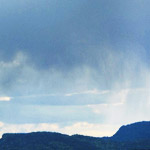
Canopy interception
The precipitation which could be intercepted or connected by a small plant, eventually evaporates back to the atmosphere rather than falling to the ground.
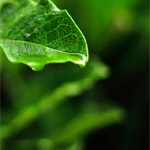
Snowmelt
Snowmelt is surface runoff produced from melting snow. Water produced by snowmelt is an important part of the water cycle in many parts of the world, which contributes a large fraction of the annual runoff in a watershed. Rapid snowmelt can cause flooding.
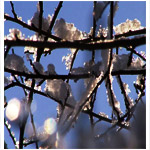
Runoff
The variety of ways by which water moves across the land. This includes both surface runoff and channel runoff. As it flows, first of all the water will seep into the ground, evaporates into the air, become stored in lakes or reservoirs, or be extracted for agricultural or other human purposes.
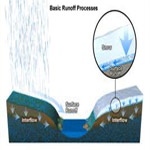
Evaporation
The transformation from liquid to vapour (gas) phases which occurs only on the surface of a liquid is referred as Evaporation. Evaporation is an essential part of the water cycle. The Sun (Solar Power) evaporates water from oceans, lakes, moisture in the soil, and from other sources of water. In hydrology, Evaporation and transpiration are collectively termed as evapotranspiration. Another thing that we should remember that whenever a source of water evaporates into the atmosphere then there it condensed to form clouds and falls back as rain on the Earth.
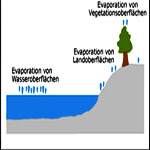
Sublimation
The state which directly changes from solid water (snow or ice) to water vapour is termed as Sublimation
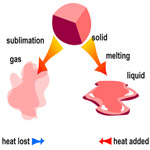
Deposition
The process of changing water vapour direct to ice is termed as Deposition.
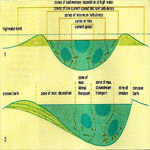
Condensation
The transformation of water vapour to liquid in the air, creating clouds and fog is termed as Condensation.

Transpiration
The release of water vapour from plants and soil into the air is called as Transpiration.
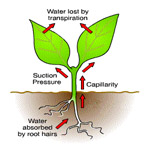
Advection
The movement of water – in solid, liquid or vapour states – through the atmosphere. Without advection, water that evaporated over the oceans could not precipitate over land.

Infiltration
The flow of water from the ground surface into the ground is termed as Infiltration. Once infiltrated, the water becomes soil moisture for the plants
or becomes ground water.
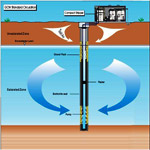
Percolation
Water flows horizontally through the soil and rocks under the influence of gravity is called Percolation.
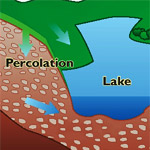
Looking for something? Ask Google.
Try out the other sections